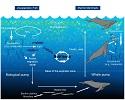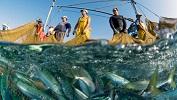Aquatic life refers to life in or near water. In fact, life in water originated before terrestrial life did. Over 70% of the Earth’s surface is covered by water, meaning that aquatic habitats are dominant in terms of available space for ecosystems across the globe.
Aquatic life presents a range of stressors which organisms must learn to cope with in order to survive. These stressors include:
- Dehydration: In aquatic ecosystems, dehydration is influenced by osmoregulation and salinity. The plasma membrane of an organism’s cells is semi-permeable and this influences the movement of particles and water in and out. In different aquatic environments, salinity levels vary and this influences how homeostasis is maintained.
- Freezing: This is a stressor faced by freshwater systems during the winter months.
- Overheating: This can result from anthropogenic causes and very sensitive organisms, such as corals, can die off due to increased temperatures.
- Sunlight: The amount of sunlight which aquatic organisms are able to receive decreases drastically with depth. A large proportion of sunlight is absorbed within the first 10 or so metres. A much lower level of photosynthesis takes place in aquatic ecosystems.
- Oxygen: Oxygen levels vary in water, with the largest amounts of oxygen being available close to the surface and at deeper levels, greater than 1000 m.
Additionally, there are two main types of aquatic environments. These are freshwater environments and marine environments. Marine ecosystems are comprised of the world’s oceans and possess about 97% of the world’s water. Freshwater ecosystems are comprised of all other water bodies, such as lakes, streams, ponds and wetlands. Thus, 3% of the Earth's water is comprised of freshwater. Furthermore, the characteristics and organisms found in these ecosystems differ, with the main difference being that marine habitats have higher levels of dissolved compounds, namely salts. Nevertheless, both of these ecosystems house a large proportion of the world’s natural diversity.
References:
Image Credit: flickr.com
© BrainMass Inc. brainmass.com July 25, 2024, 12:26 pm ad1c9bdddf



